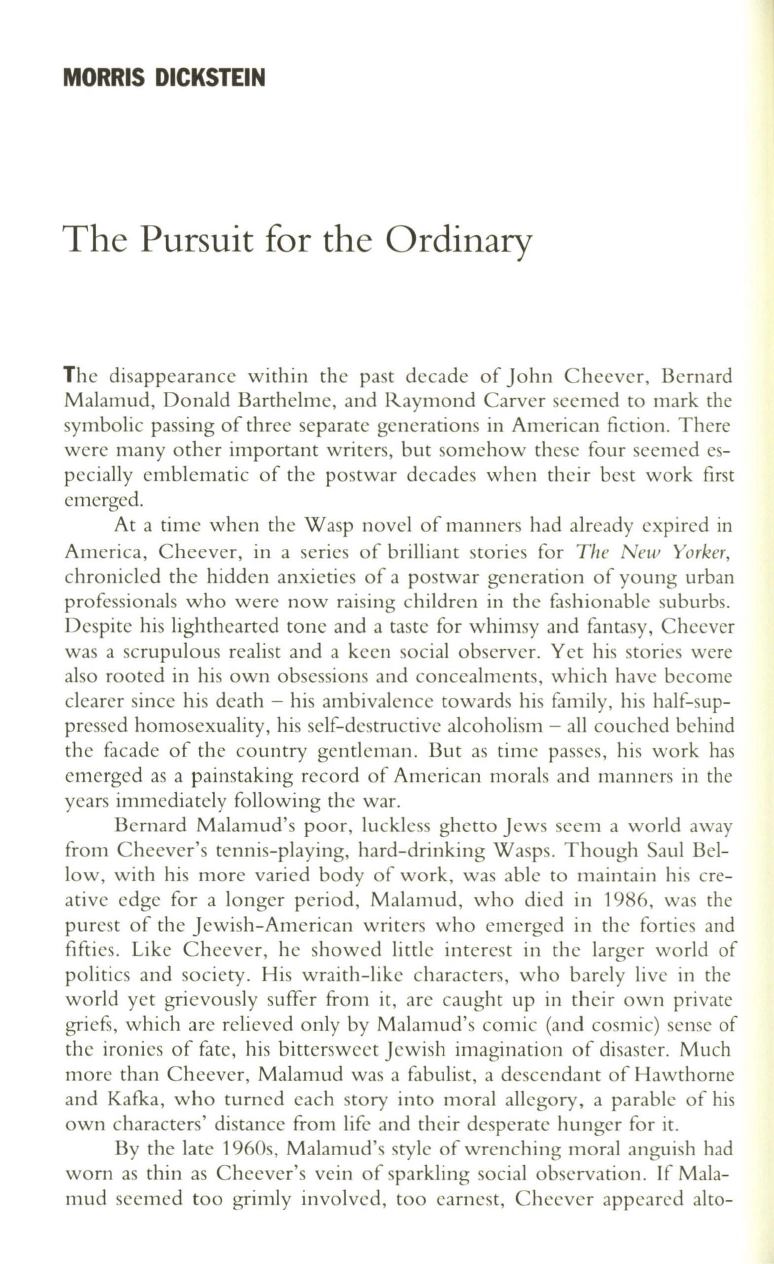
MORRIS DICKSTEIN
The Pursuit for the Ordinary
The
disappearance within the past decade of John Cheever, Bernard
Malamud, Donald Barthelme, and Raymond Carver seemed to mark the
symbolic passing of three separate generations in American fiction. There
were many other important writers, but somehow these four seemed
es–
pecially emblematic of the postwar decades when their best work first
emerged.
At a time when the Wasp novel of manners had already expired in
America, Cheever, in a series of brilliant stories for
The New Yorker,
chronicled the hidden anxieties of a postwar generation of young urban
professionals who were now raising children in the fashionable suburbs.
Despite his lighthearted tone and a taste for whimsy and fantasy, Cheever
was a scrupulous realist and a keen social observer. Yet his stories were
also rooted in his own obsessions and concealments, which have become
clearer since his death - his ambivalence towards his family, his half-sup–
pressed homosexuality, his self-destructive alcoholism - all couched behind
the facade of the country gentleman. But as time passes, his work has
emerged as a painstaking record of American morals and manners in the
years immediately following the war.
Bernard Malamud's poor, luckless ghetto Jews seem a world away
from Cheever's tennis-playing, hard-drinking Wasps. Though Saul Bel–
low, with his more varied body of work, was able
to
maintain his cre–
ative edge for a longer period, Malamud, who died in 1986, was the
purest of the Jewish-American writers who emerged in the forties and
fifties. Like Cheever, he showed little interest in the larger world of
politics and society. His wraith-like characters, who barely live in the
world yet gri evously suffer from it, are caught up in their own private
griefs, which are relieved only by Malamud's comic (and cosmic) sense of
the ironies of fate, his bittersweet J ewish imagination of disaster. Much
more than Cheever, Malamud was a fabulist, a descendant of Hawthorne
and Kafka, who turned each story into moral allegory, a parable of his
own characters' distance from life and their desperate hunger for it.
By the late 1960s, Malamud's style of wrenching moral anguish had
worn as thin as Cheever's vein of sparkling social observation. If Mala–
mud seemed too grimly involved, too earnest, Cheever appeared alto-


